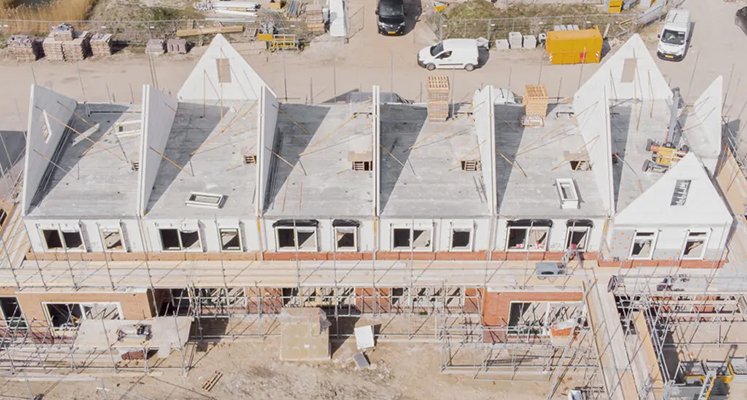With a package of structural regulatory measures, new housing construction can be pushed up to 100,000 per year in the medium term. The most promising of these is the designation of small-scale residential locations in green areas and an extension of the loan standards for young starters. This is the conclusion of the Economic Institute for Construction (EIB) in the recently published publication "Stimulus measures housing".
"The ambition to build 100,000 housing units annually is falling further out of sight due to the current economic situation," reports EIB director Taco van Hoek. "Permits for new housing have fallen from 80,000 in 2021 to an expected 60,000 this year. Without additional policies, housing production will fall in the short term and will not exceed 75,000 homes in the medium term. The peculiar situation then arises that demand in the housing market falls temporarily, while supply is a structural bottleneck."
Incentive
A package of structural regulatory measures provides the main stimulus for housing construction, and with this, the new construction of 100,000 homes per year seems feasible in the medium term. Van Hoek: "This primarily involves designating small-scale green housing sites that can be realized relatively quickly and do not require public funds. Likewise, broadening the income standards for first-time buyers in mortgage lending involves no cost and is justifiable from a risk and social welfare perspective. The third (politically sensitive) measure is to relax affordability requirements in housing programming. While the affordability policy increases the relevant supply in new construction, it makes housing construction less profitable and, in the process, ensures that less affordable housing becomes available from the existing stock."
Temporary package
The short-term dip in new construction production can be significantly reduced with a package of temporary financial measures, according to the EIB. "A buyout fund seems the most effective for this because it directly addresses the temporary drop in demand. An altemative is a guarantee scheme, which taps into financing from banks, but the effects of this are modest," stated Van Hoek. "A temporary reduction in the VAT rate on new construction homes also provides a boost in the coming years, but due to so-called 'free rider' effects, the budgetary impact is substantial compared to the other measures. All these measures require a temporary commitment of public resources."
The main choice in the use of public funds is between subsidies and guarantees on the one hand and the buyout fund on the other. It must be noted that subsidies as they have been shaped so far through the housing impulse have hardly boosted housing construction. The scheme has been in place since 2019 and even in the permits no effect of this has been seen yet.
Van Hoek: "The core problem here was that most projects would often have gone ahead without the grant. In addition, in times of a shortage of demand, projects that do get into gear crowd out other projects. In the case of the "start-up construction impulse," it seems that the projects may be additional in the first instance, but again, the projects that get into gear cause other projects to slow down because of it. This limits the effectiveness of this type of subsidy in times of crisis. Here the buyout fund is more effective because it does not shift demand, but adds additional demand at a time when demand is temporarily weak."
Starters during the housing crisis
Strengthening the position of first-time buyers - whether this takes shape through regulations or through start-up loans - is an important issue that is receiving too little attention in the current housing market crisis, Van Hoek believes. "The rise in interest rates is hitting home buyers hard, especially for first-time buyers. Starters also increasingly have to borrow the maximum amount of money and are running up against the limits of financing. If demand from first-time buyers were to come under pressure in the coming period, this would pose a major risk to the flow of income in the entire market. Simple and quickly implemented measures that strengthen the position of first-time buyers in the mortgage market therefore serve a much broader interest than just the direct benefit to first-time buyers themselves."











